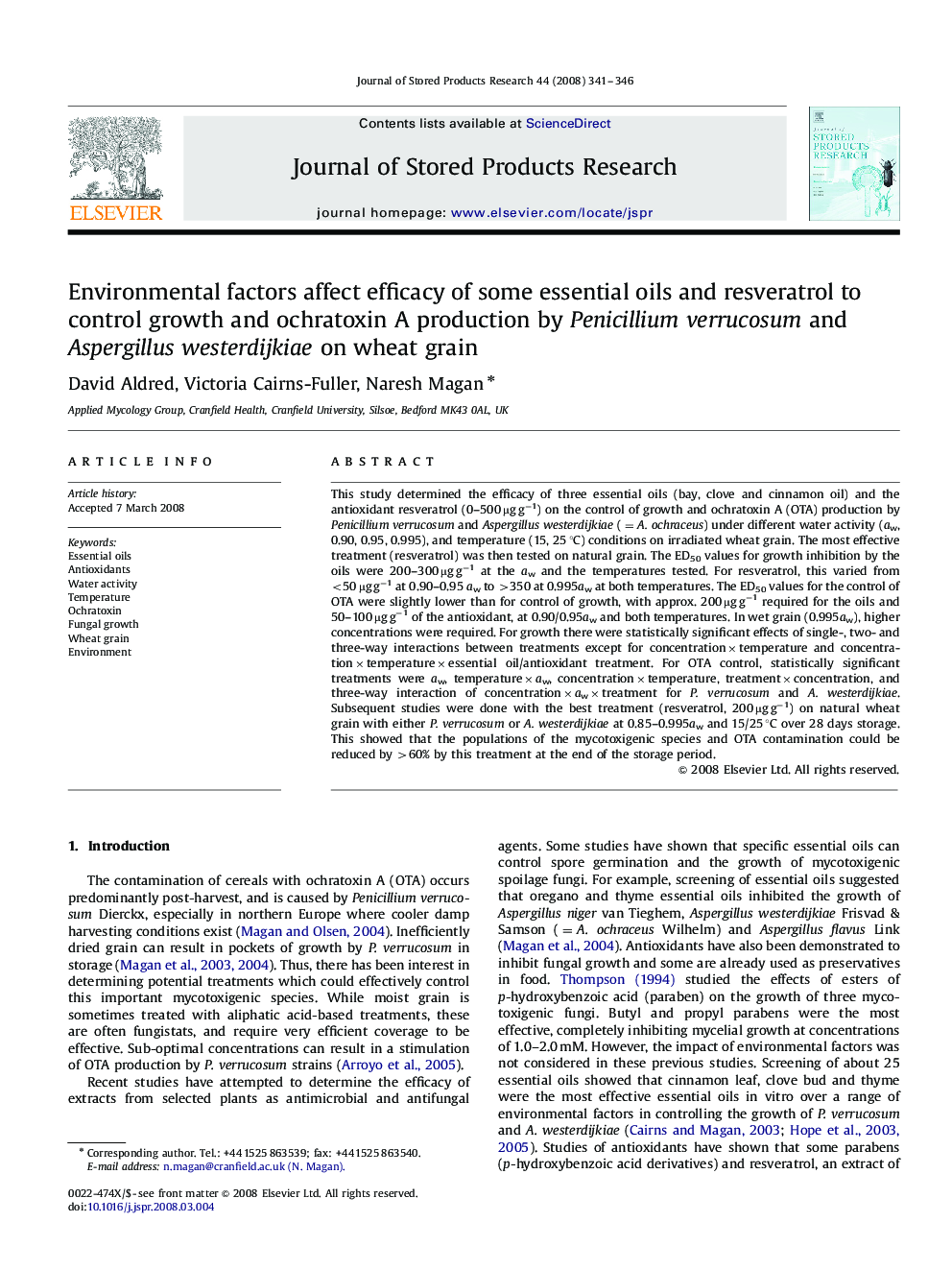| Article ID | Journal | Published Year | Pages | File Type |
|---|---|---|---|---|
| 4517498 | Journal of Stored Products Research | 2008 | 6 Pages |
This study determined the efficacy of three essential oils (bay, clove and cinnamon oil) and the antioxidant resveratrol (0–500 μg g−1) on the control of growth and ochratoxin A (OTA) production by Penicillium verrucosum and Aspergillus westerdijkiae (=A. ochraceus) under different water activity (aw, 0.90, 0.95, 0.995), and temperature (15, 25 °C) conditions on irradiated wheat grain. The most effective treatment (resveratrol) was then tested on natural grain. The ED50 values for growth inhibition by the oils were 200–300 μg g−1 at the aw and the temperatures tested. For resveratrol, this varied from <50 μg g−1 at 0.90–0.95 aw to >350 at 0.995aw at both temperatures. The ED50 values for the control of OTA were slightly lower than for control of growth, with approx. 200 μg g−1 required for the oils and 50–100 μg g−1 of the antioxidant, at 0.90/0.95aw and both temperatures. In wet grain (0.995aw), higher concentrations were required. For growth there were statistically significant effects of single-, two- and three-way interactions between treatments except for concentration×temperature and concentration×temperature×essential oil/antioxidant treatment. For OTA control, statistically significant treatments were aw, temperature×aw, concentration×temperature, treatment×concentration, and three-way interaction of concentration×aw×treatment for P. verrucosum and A. westerdijkiae. Subsequent studies were done with the best treatment (resveratrol, 200 μg g−1) on natural wheat grain with either P. verrucosum or A. westerdijkiae at 0.85–0.995aw and 15/25 °C over 28 days storage. This showed that the populations of the mycotoxigenic species and OTA contamination could be reduced by >60% by this treatment at the end of the storage period.
